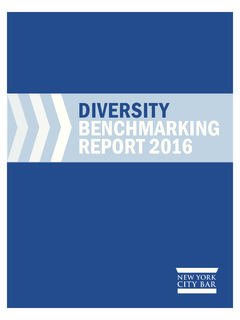Transcription of ENTERPRISE SOCIAL NETWORKING …
1 ENTERPRISE SOCIAL NETWORKING benchmarking REPORT20172 Table of ContentsExecutive Summary 31 Introduction 52 SWOOP benchmarking 63 SWOOP benchmarking Measures 7 Alignment with ESN Maturity 7 An Overall 'Network Centered ' Performance Measure 114 benchmarking Results & Insights 13 Demographics 13 Where are the biggest gaps between the best and the worst? 13 Stepping your way up the ESN Maturity Curve 13 Platform Adoption 14 Active Users 14 % Observers 14 User Engagement 16 % Broadcasters 16 % Recognition 16 Connecting 17 %Engagers, %Catalysts.
2 %Responders 17 Key Player Index 18 Sharing 19 % Public Messages 20 % Direction 20 Reply/Post Ratio 20 Threads/User 21 Problem Solving 21 % Response Rate 21 % Reciprocity & Mean Two-Way Connections 22 Innovating 24 % Diversity 245 Key Performance Indicators 266 Multiple Channels or Toolsets for Collaboration 287 Network Performance = Organizational Performance? 29 Organizational Performance Comparisons 29 Who are our Collaboration Champions? 308 Internal benchmarking 329 Final Words 34 About the Author 353 Executive Summary SWOOP Analytics provides a unique online SOCIAL NETWORKING platform which analyzes online interactions from ENTERPRISE SOCIAL Networks, in real time.
3 Through SWOOP, we have been able to collect anonymized operational data from 57 organizations, over an extended 6-month period. The organizations ranged in size from 100 to 26,000 active users (average 4,400), across a full breadth of industry sectors and geographies. This is the largest ever collaboration benchmarking analysis using data sourced from operational activity. This second edition of our benchmarking studies makes use of our proprietary collaboration benchmarking framework, which positions specific measures against stages in the ESN maturity: Platform Adoption, User Engagement, Connecting, Sharing, Solving and ReadershipWe anticipate that those responsible for the successful implementation of an ENTERPRISE -wide collaboration platform will gain most from this report. The Community Manager is provided with a structured approach, supported by analytics, to shepherd their communities towards achieving their true potential.
4 Internal Communications Managers can learn how to move beyond simply broadcasting corporate messages, to engaging with their audience through interactive conversation. Senior Line Managers, CEO, COO and Functional Leads will likely find familiarity with the benchmarking approach being employed, from similar experiences in their own lines of work. While an ENTERPRISE SOCIAL Network can be disruptive to traditional lines of communication, management should find comfort in the fact that performance improvement techniques, devised from decades of quality management experience, remain critical to business success. Key InsightsFrom this 2017 benchmarking , our key insights are: An organization s ENTERPRISE SOCIAL Network performance is a reflection of its overall performance, meaning a successful ESN network correlates to a successful business.
5 Two-way communication is a core predictor of organizational trust and ultimately job fulfilment. Two-way communication was the largest area of variation across the 57 organizations measured. If reciprocity is not being measured, an organization is flying blind . Online networks are able to effectively maximize both diversity and cohesion; something we have not seen in a decade of studying offline SOCIAL networks. The ability for staff to be exposed to a diversity of experiences and thought, at the same time as being highly connected on a day- to-day basis, is a breakthrough in digitally facilitated human productivity. Online SOCIAL networks are susceptible to key player risk over reliance on a selected few. On average 7 per cent of active users are responsible for 50 per cent of the connections being made.
6 This is substantially lower than for offline networks. It is therefore critical to manage for redundancy and succession in online groups, if they are to be sustained. Passive participation rates (less than one activity every two weeks) is still uncomfortably high at 68 per cent on average (down from 75 per cent in 2016). Networks will always have a core of active participants and a periphery of less active, so 100 per cent active participation is not a realistic goal. Understanding the balance between your active inner circle to your passive outer circle for networks is akin to balancing assets and liabilities on your balance sheet. We suggest therefore that a good initial target for core to periphery split should be about 50 per cent. Participation rates are not a function of organizational size, with many large organizations 4 sustaining high participation rates and vice versa.
7 Independent of your organizational size, the objective should be to create highly cohesive groups/teams that are also interconnected through network leaders. Perhaps one of our most important findings was that even poor performing organizations usually have at least one ESN group that is operating at a mature level of collaboration. In essence this means that organizations have the capability to improve their collaboration performance through developing their own internal benchmarking initiatives. Independent of your current level of maturity with ESNs, internal and external benchmarking will be critical to your journey to business Introduction We find that one of the biggest challenges for sponsors of ENTERPRISE SOCIAL Networks (ESN) is answering the question what has been our return on investment? The reason why this is a hard question to answer is the same reason it s hard to answer for any piece of core organizational infrastructure.
8 The ESN s value is interwoven with other core infrastructure like organizational culture, vision, strategy, core competencies and the like, into a complex web of interactions that defy separation and independent reporting of ROI. Collaboration guru Jacob Morgan identifies many cases where organizations have been able to identify ROI after the fact. However, he also points out that those organizations demanding an ROI for something as fundamental as collaboration, may have bigger cultural issues to deal is another way however. Without resorting to an auditable ROI, organizations can still judge how they are performing against like organizations, to assess their relative performance. This is not something new. The quality movement has relied on benchmarking to assess organizational progress for decades. The popular business improvement method Six Sigma identifies the benefits of benchmarking as: Providing a focus on best practices; Strives for continuous improvement; Enable partnering to share information; Needed to maintain a competitive edge; and Facilitates adaptation based on customer needs after examination of the services are widely available across many organizational disciplines and industry sectors for precisely this reason.
9 You do not have to be the best in the world at everything, but you do want to compare favorably with those organizations that matter most to you your closest competitors, or other organizations you admire. To date, these benchmarking services do not extend to ESNs SWOOP benchmarking This is the world's largest benchmarking analysis of ESN performance. The dimensions for comparisons are the result of more than a decade of applied research and development, focused specifically on SOCIAL NETWORKING -enabled collaborative performance. In our inaugural 2016 benchmarking report we compared 16 organizations. In 2017 our benchmarking report covers 57 organizations with 250,000+ individuals and + interactions, across the full breadth of industry sectors; indicative of the growth in adoption of ESNs world-wide. At the time of writing, the sample is limited to Microsoft Yammer.
10 However, we are already collecting Workplace by Facebook and non-Yammer Microsoft Groups metrics for addition to our benchmarks in the future. Our rapidly growing benchmark sample provides unique insights into what is important in driving business performance through ESNs. We have identified that the best performing enterprises display the strongest performances on the key dimensions of reciprocity, diversity and responsiveness. The large variances between organizations on several of our key performance indicators suggests there is a growing gap between those that are mastering digitally facilitated collaboration and those that are not. The size of this variance provides a measure of the opportunity gap that new adopters are provided with; and a means for monitoring their performance over this benchmarking study compares organizations at the ENTERPRISE level, the good news for early adopters is we have found there are individual groups in all organizations that compare favorably with groups anywhere in our Our benchmarking report covers some 57 organizations with 250,000+ individuals and + base.





